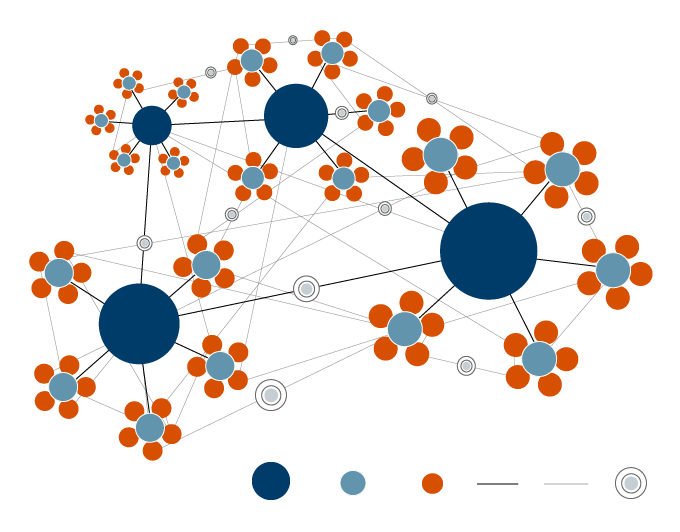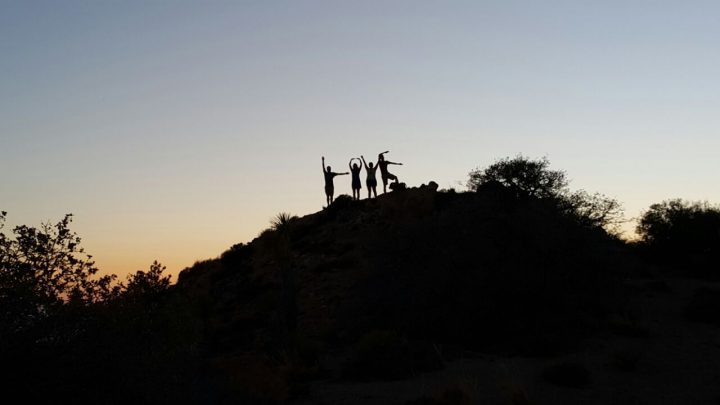Tag Archive: Collaboration
July 18, 2018
This is a repost of a fourth in a series of postings written by former IISC Senior Associate Linda Guinee about power and group facilitation processes, based on research she completed a number of years ago. Today’s post is about how power is built into group narrative. Also check out these other posts on power: “What is Power Anyway?” “Power Dynamics: The Hidden Element to Effective Meetings“
As I was doing research, I came across a batch of work about narrative theory by Sara Cobb and Janet Rifkin (cited below). Cobb and Rifkin researched how a narrative is constructed and what impact it has on the ultimate outcome of mediation sessions. They found that the first story told tends to be privileged and “colonize” later stories told. By framing the discussion to come, this initial story tends to narrow and define the direction of the ensuing conversation. Later versions are generally tied to the initial story and thus are unable to be fully developed. And the outcome of mediation is generally tied to the initial story.
This can also play a role in group facilitation. If the first version told in a group becomes the frame under which all other discussion happens, a facilitator must pay attention to who tells the first story – or to how to reinforce different versions. Read More
July 16, 2018
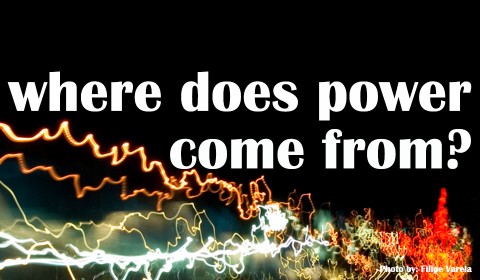
This is a repost of a third in a series of posts on power, facilitation and collaborative process that former IISC Senior Associate Linda Guinee wrote back in 2010. Last week we reposted Linda’s piece “What is Power Anyway?,” which followed a new post by a few of us on power and meetings. Enjoy!
More about power and group processes. There have been a mountain of books written about the “bases of power” and the “types of power”. I’ve done some work to try to boil it down – and find thinking about this very useful in moving forward the conversation about how to address power issues in group processes.
In the 1950s, French and Raven put out a proposal about five “bases” of power, which others added to. Bases of power are what gives a person or group power. French and Raven came up with these five:
- Reward Power – power that comes from the ability to reward the other party for complying
- Coercive Power – power that comes from the ability to punish the other party if they do not comply
- Legitimate or Normative Power – power that comes from accepted group, community or societal norms or values which are generally viewed as “legitimate”
- Referent Power – power that comes from being identified with a person or group (for example, so and so gains power by being friends with X or being a member of Y group)
- Expert Power – power that comes from the perception that the person or group has knowledge
Morton Deutsch later added a sixth:
- Ecological Power – power that comes from being able to control one’s social or physical environmental in such a way that the modified environment induces a desired behavior or prevents an undesired behavior.
Read More
July 12, 2018
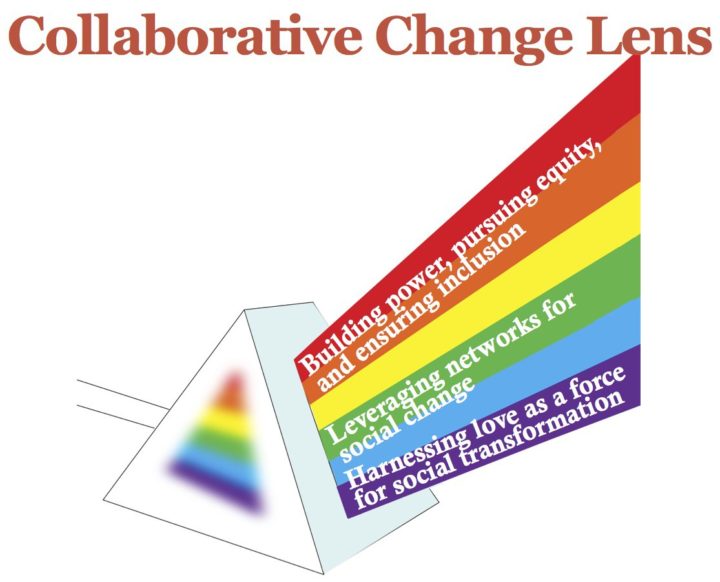
Building on the theme of our recent blog post, Power Dynamics: The Hidden Element to Effective Meetings, we are reposting a series of posts written by our former IISC colleague Linda Guinee. Linda wrote a masters’ thesis on addressing power dynamics in collaborative process design and facilitation. She did this study based on questions raised over the years by another former IISC colleague, Cyndi Suarez (current Senior Editor at NonProfit Quarterly and author of The Power Manual: How to Master Complex Power Dynamics) – and as she put it, “with the belief that if power dynamics are not well understood and addressed, group process facilitators are likely to unknowingly reinforce the status quo – a scary thought for those of us working on social justice and social change!”
As Linda wrote in her opening post in 2010:
“One thing that woke me up at two in the morning – one of those notorious ‘aha’ moments – was that when doing an extensive literature review of group facilitation literature and conflict resolution literature at that time (2005), I found that conflict resolution/engagement literature is packed full of discussions about addressing power dynamics – while group facilitation literature rarely (if ever) talks about power I only found a very small handful of references to power (as in two or three) anywhere in the very extensive group facilitation literature – and only in reference to people with positional power. There is, in fact, an assumption built into group facilitation methodology that collaboration on its own somehow balances power dynamics.”
Here is her second post in the series …
One of the first questions you might ask when thinking about looking at power dynamics in group facilitation is what IS power anyway? This seemingly simple question, of course, is not really all so simple after all. What do you think? How would you describe power?
When I first started trying to answer this question for myself, I found that I was overwhelmed with material – literally hundreds and hundreds of books about what power is, where it comes from, how it operates, etc. For many, a definition of power has to do with the ability to force something to do something they wouldn’t have done otherwise – a coercive definition of power. Feminist psychologist Jean Baker Miller described power as “the capacity to produce a change.” Others (and in fact, our common terminology) talks about power as a “thing” that can be divided, shared, owned, and transferred.
Read More
March 27, 2018
“We cannot live for ourselves alone. Our lives are connected by a thousand invisible threads, and along those sympathetic fibers, our actions run as causes and return to us as results.”
– Herman Melville
In an earlier post in this series on networks and education, we explored the underlying vitality of connection and flow in our world and how this can create opportunity and health in our lives and in learning. According to network theory and practice, it can make a big difference when we are aware of who is and is not connected and then act intentionally to build and leverage relationships in both number and quality. Stories from a variety of fields illustrate the phenomenon of small and great change being rooted in creating ties and flows between different actors and elements in a system.
Now let’s take a step back and ask, “What is a network?” A basic definition is that networks are nodes and links. That is, they are elements of different kinds (people, schools, other kinds of organizations) that are tied together (consciously or unconsciously) in some larger pattern by one or more types of connectedness–values, ideas, friends and acquaintances, likes, exchange, transportation routes, communications channels. Social networks, comprised of individual people or groups, can be experienced in person and also virtually.
In the world of education and learning, here are some of the ways networks show up:
- Open classrooms – Digital technology is used to connect students to a wide array of information and a diversity of community partners and real-world learning experiences both within and beyond a classroom’s walls. (e.g., CommunityShare)
- Communities of practice – Students, teachers, and school or district leaders connect their learning, engage in inquiry, and refine practice through learning webs within or across schools and districts.
- Community schools/schools robustly connected to local community ecosystem – Connections create opportunities for authentic learning, job readiness, and student resilience; wrap-around services ensure fuller suite of supports for students. (e.g., Dudley Street Neighborhood Initiative)
- Networks of schools – Schools are connected by their alignment to a model or philosophy, influencing a culture shift within the broader field of education.
- Movement networks/”networks of networks” – Collectives of schools or education organizations push for transformation in the field toward greater equity, democracy, “education as a public good” (e.g., National Public Education Support Fund).
- You (yes, you!) as a network (student, teacher, leader … all learners) – As individuals, we are (or can be) internally connected to multiple intelligences and ways of knowing–analytical/intellectual, embodied/somatic, emotional, spiritual.
The Value of Networks for Education and Learning
So what is the big deal about networks? Is there really anything new here? These are questions that come up, though seemingly less often over the past five years or so with the proliferation of various social media. On the one hand, networks have always existed as long as life has existed, so there is not anything new here. On the other hand, the various digital tools and technologies that have evolved to rapidly and dramatically shrink the world are showing us what more intricate and efficient forms of communication and exchange can make happen.
And while it is true that virtually all collaborative forms of social organization meet the basic definition of being a network (coalitions, alliances, organizations, communities), not all such forms leverage to the same extent what are called “network effects.” … To continue reading this post on the Education Week website, go to this link.
“You’ve got to keep asserting the complexity and the originality of life, and the multiplicity of it, and the facets of it.”
– Toni Morrison
February 19, 2018
“It’s not knowing what to do that counts, it’s knowing what to do when you don’t know what to do.”

Last week I had the privilege of co-leading a three day Facilitative Leadership for Social Change training for a group of health equity advocates in Springfield, Massachusetts. It had been a while since I had done a training of that length, and it was a nice opportunity to not only cover more material, but to deepen the conversation and practice. Along the way there were many good questions about what to do around various challenges when one is co-leading a collaborative change effort. And a common response was, “It depends.”
Every group is different, every circumstance is different, and while it might make sense to take some cues from what has been successful in other situations, the caution is not to assume that it will work, or work in the same way, in other situations. This is one reason that I personally do not like the phrase “best practice” when talking about collaborative and facilitative change work. Given the complexity of people and social systems, I find it more helpful to think about “promising practices.”
That said, a promising practice that came up time and time again in our three day training, was the practice or practicing, of ongoing devotion to muscle-building in leadership skills such as process design, facilitation, coaching (leading with listening and inquiry), systems thinking, visioning/imagining, mutual learning and collaborative decision-making/governance. And in undertaking such practice, we at IISC would suggest this is not about achieving perfection. The humbling and exciting thing about collaborative leadership, in my humble opinion, is that it is a life-long learning pursuit and an endless opportunity to deepen understanding of ourselves, others and living systems. For this reason, one of my mantras is:
Practice for presence, not for perfection.
That is, practice can help practitioners get beyond being caught up in simply “learning the scales” of collaborative leadership, in trying to get the skills “right.” Practice at its best can contribute to a state of being more fully present to what is happening in any given situation and being able to work with that in powerfully improvisational ways.
Furthermore, over the past year, there has been a clear call for practice and practices that are explicitly about cultivating spaces to hold difference and tension and trauma. That may be another order of presence characterized by a deeper tuning in and movement away from more transactional processes to ones that are emergent, co-created and geared towards supporting moral courage and imagination. What that can require is vulnerability and a humble sense of “being with.” What it stands to make possible, as opposed to business-as-usual, is growth and real movement forward, together.
January 3, 2018
“We rise and fall and light from dying embers, remembrances that hope and love last longer
And love is love is love is love is love is love is love is love, cannot be killed or swept aside.”
– Lin Manuel Miranda
We know we are not alone at IISC when we say that 2017 left many of us a bit exhausted and breathless, if not somewhat dumbfounded. What occasionally felt like the wheels coming off of our country’s management and morality caught us by varying degrees of surprise, which is not to say that the underlying frustration and ongoing dynamics of “othering” were necessarily shocking. Rather, the unabashed in-your-face tenor of it all got to points where it was all I could do to stay even minimally tuned in to have at least a fingernail on the pulse of things (but really, there were few places to hide!).
I am grateful that as an organization we take a break at the end of the year to rest, restore and reflect. And while some of us may feel like we could use another week (or two), I for one feel ready and resolved to step boldly into 2018 with an open heart and humble sense of not knowing (what will happen, what is in others’ hearts and minds, what the answers are). I would characterize this as a stance of love or loving kindness. Read More
October 24, 2017
“Relationship is the fundamental truth of this world of appearance,”
– Tagore
Over the past several years of supporting networks for social change, we at IISC have been constantly evolving our understanding of what is new and different when we call something a network, as opposed to a coalition, collaborative or alliance. On the surface, much can look the same, and one might also say that coalitions, collaboratives and alliances are simply different forms of networks. While this is true, it is also the case that not every collaborative form maximizes network effects, including small world reach, rapid dissemination, adaptability, resilience and system change. In this regard, experience shows that a big difference maker is when participants in a network (or an organization, for that matter) embrace new ways of seeing, thinking, and doing. The following revised list continues to evolve as our own practice and understanding does, and it speaks to a number of network principles to guide thinking and action:
October 2, 2017
“We cannot live for ourselves alone. Our lives are connected by a thousand invisible threads, and along those sympathetic fibers, our actions run as causes and return to us as results.”
– Herman Melville
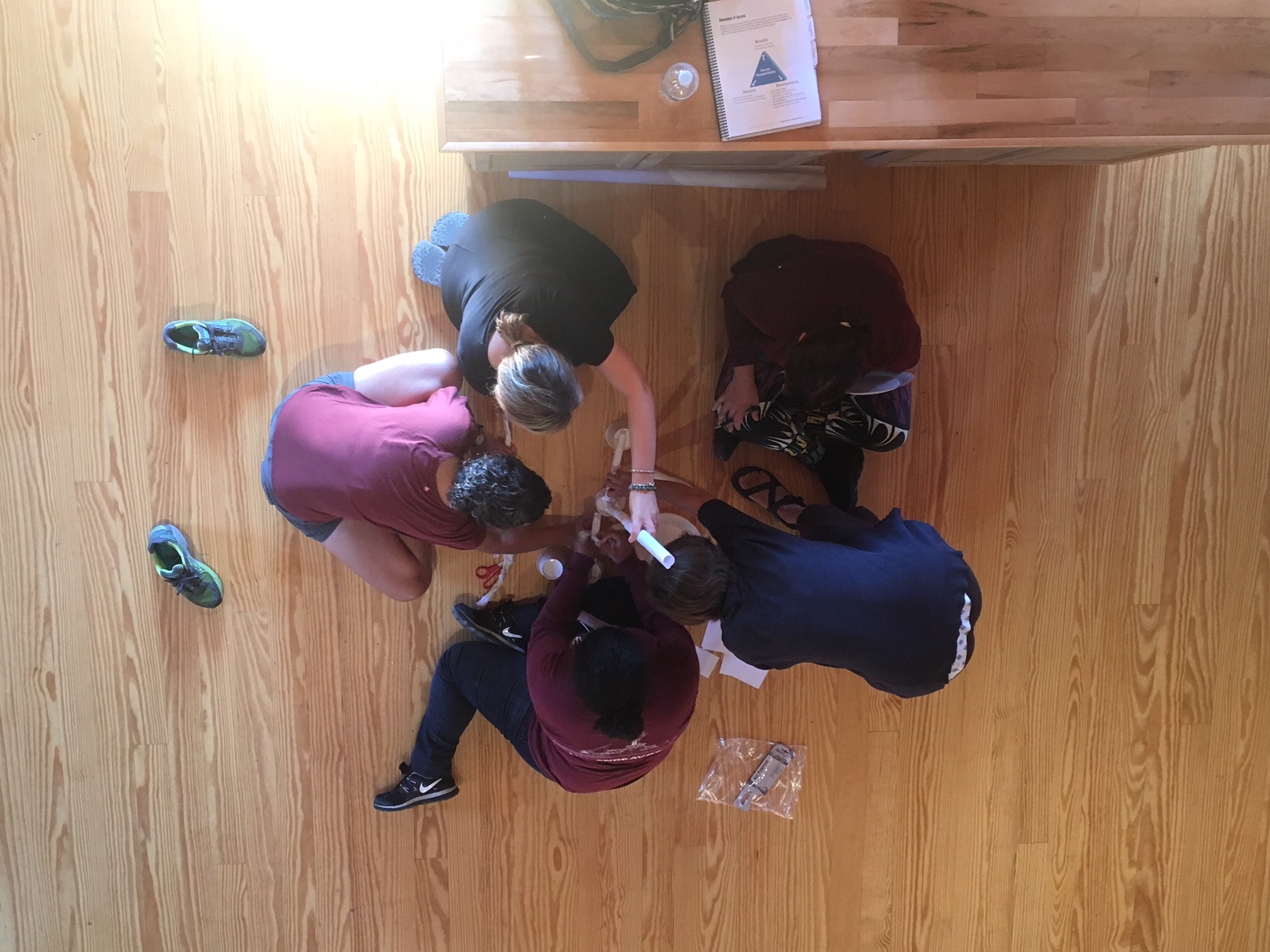
2017-2018 NLI cohort members engage in a team building exercise focused on the dimensions of collaborative success.
Last week I worked with the Backbone Team of Food Solutions New England to launch the second cohort of the Network Leadership Institute (NLI) at Ohana Camp in Fairlee, Vermont. This initiative has grown out of FSNE’s commitment to cultivating both thought leadership and network leadership “to support the emergence and viability of a New England food system that is a driver of healthy food for all, racial equity, sustainable farming and fishing, and thriving communities.” Another impetus for the NLI was a year spent doing system mapping and analysis that revealed four leverage areas for advancing a just, sustainable and democratically-owned and operated regional food system, including cultivating and connecting leadership (see image below). Read More
June 13, 2017
“Life moves toward other life… If we trusted more in these cohering motions, we could move into an essential role … supporting the system to explore new connections, new information, new ways of being. It means focusing on opening the system in all ways.”
Margaret Wheatley and Myron Kellner-Rogers, a simpler way
“Bridging” in the work of network development speaks to the act of creating connections between socially heterogeneous groups (or putting it a bit more crassly, building bridges between “us” and “them”). The benefits of bridging include making it possible for diverse groups to share and exchange information, creating new forms of access, as well as leveraging new ideas and spurring innovation between groups representing different interests and/or backgrounds. Bridging widens social capital by increasing the “radius of trust.” Unlike “bonding,” or more in-group relationship building (think “birds of a feather flocking together”), bridging can help create more inclusive structures that can have implications for long-term resilience and more equitable development. The following is a story of a network engaging in intentional bridging work for more robust connectivity, flows and opportunity …
Food Solutions New England (FSNE) is a regional, collaborative network organized to “support the emergence of a New England food system that is a resilient driver of racial equity and food justice, sustainable farming and fishing, and thriving communities.” FSNE is convened by For the past 5+ years, IISC has worked with the convening “backbone organization,” UNH Sustainability Institute, to launch and structure itself as a formal network, as well as to concretize and evolve its core commitment to racial equity as it has become more diverse and inclusive and worked for systemic change.
Eighteen months ago, FSNE was faced with making a decision about where to hold its annual Food Summit. The Summit was originally conceived to bring together delegates from across New England to strengthen collaboration for regional food system sustainability. The commitment was made early on by the convenor to move the Summit around the region, holding it in each of the six New England states once before going to any of them for a second time.
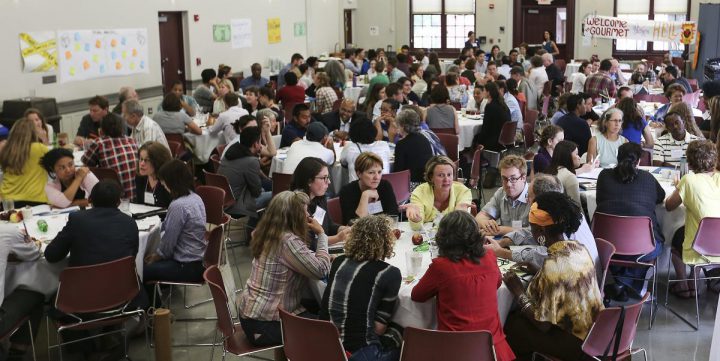
Delegates to the 2015 New England Food Summit gathered in Boston, MA.
In 2016, Connecticut was the last state to host the New England Food Summit. The network’s backbone organization was faced with a decision about the specific location within the state. Previous Summits had been held in prominent hubs in the other states – Portsmouth (NH), Burlington (VT), Portland (ME), Pawtucket/Providence (RI) and Boston. While places like Hartford and New Haven might have been natural considerations given their respective amenities and relative centrality in the state, the choice was made to bring the Summit to Bridgeport. This decision was spurred in no small part by the leadership of State Senator Marilyn Moore, who hails from that city and is a member of the FSNE Network Team. Senator Moore pointed out that not only would it be significant for Bridgeport to play host, given it is often overlooked in favor of its more well-known and regarded neighbors, it would also be enlightening for Summit delegates to see reality on the ground. Furthermore, this choice was viewed as an expression of FSNE’s commitment to racial equity and food justice.
Read More
April 25, 2017
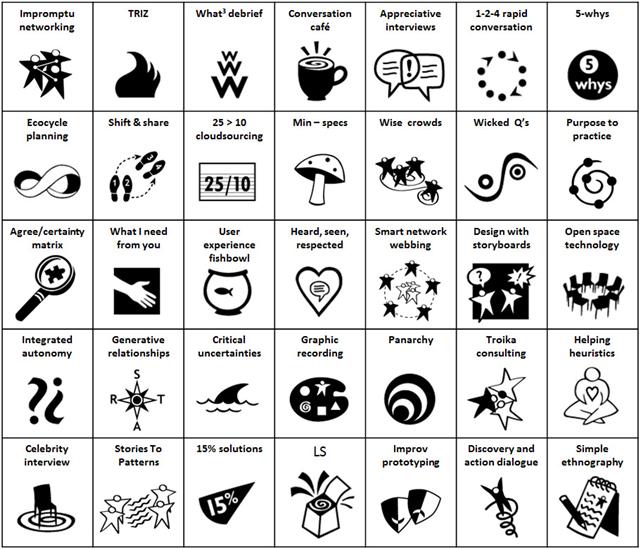
With inspiration from Nancy White – thank you! (and make sure to check out Nancy’s blog) – I have been returning to and reviewing the list of Liberating Structures created and collected by Henri Lipmanowicz and Keith McCandless for application to some strategy development work with a couple of social change networks. As described on the website:
Liberating Structures are “easy-to-learn microstructures that enhance relational coordination and trust.
Liberating Structures are meant to foster enlivening participation in groups of all sizes, making it possible to truly include and unleash everyone.”
In reviewing the various structures, I’ve pulled out and added to a list of strategic questions that could be offered in concert with different group processes (World Cafe, Open Space, pair shares, fishbowls, individual reflection, etc.) to open up possibilities … Read More
February 27, 2017
“We add value to society-at-large when we dare to connect.”
– Gibran Rivera
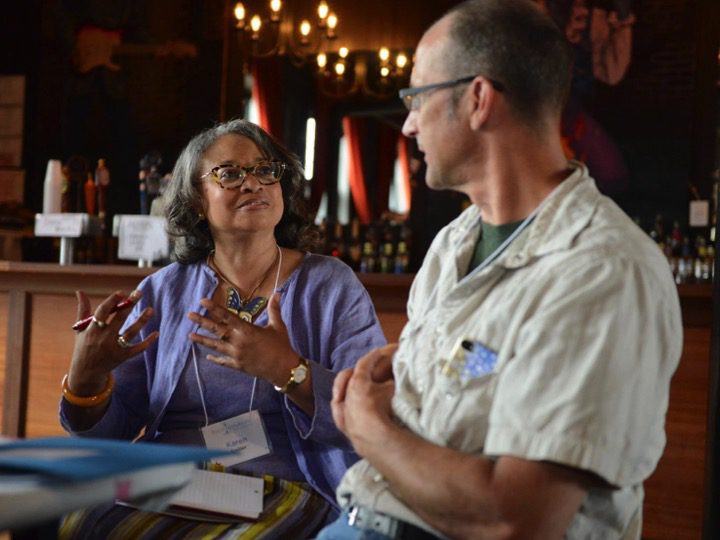
For the past five years, Food Solutions New England has been building a regional collaborative network organized to support the emergence and sustainability of a New England food system that is a driver of healthy food for all, racial equity, sustainable farming and fishing, and thriving communities. This network was formally launched with support of IISC in response to a shared sense that greater connection, trust, deep collaboration and innovation were needed across food system efforts throughout the region. To create this connectivity, we have engaged in a number of structural and procedural innovations, including creating an Ambassador Team to do network weaving and the 21 Day Racial Equity Habit Building Challenge, which will happen again this year from April 9-29.
Along the way, we have been witnessing some important boundary-crossing and new partnerships emerging. One example in particular stands out, stemming from a field visit a number of us did to a fishing community in the region to learn more about the challenges to and innovations among small scale fishermen. Our tour was organized by a network team member and community organizer of color who focuses on fisheries who has many deep connections in that community. One of the attendees of the tour was an older white man who does policy work in another state. Personality-wise, these two individuals are quite different, along with their chosen points of intervention in the food system. And yet on the heels of that tour, the organizer and the policy wonk became good friends and colleagues who continue to learn from one another and coordinate more around fisheries and policy analysis/development, creating new opportunities in and across their respective worlds. Read More
July 7, 2016
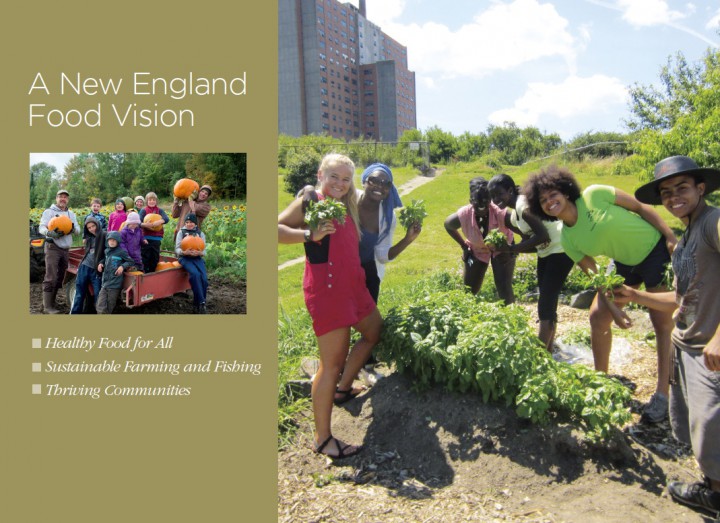
For the past 4 years, IISC has supported Food Solutions New England (FSNE) in developing a network and collaborative practices to forward its work for “an equitable, ecological regional food system that supports thriving communities.” In the past year, this work has included conducting a system mapping and analysis process to identify leverage areas for regional strategy development. One of these leverage areas is “making the business case for an equitable ecological regional food system,” which includes thinking at the levels of individual food-related businesses, economic development, and political economy. Strategy development will begin in earnest this fall, and as a precursor, IISC and FSNE facilitated a convening of businesses and community members in the Boston area to discuss how business are already aligning with the New England Food Vision and the real challenges that stand in the way. What follows is a summary of that evening’s conversation.
“You have to be patient, develop trust, and have people go with you.” These were words from Karen Masterson, co-owner of Johnny’s Luncheonette in Newton, MA as she talked about what it takes to align her business with the aspirations of the New England Food Vision. Read More



